“There has been a 46% decrease in the number of FDIC-insured institutions since 2000”- FDIC 2021 Report
Dear First Mates,
Good day everyone! I hope all is right as rain. This month, I will focus on another alternative asset class: private credit.
The Basics
Private credit is an investment strategy where investors lend money to public or private businesses based on contractual principal repayments with a stated interest rate. This type of debt financing benefits both borrower and lender. Business owners use the money to grow their enterprise while lenders earn a competitive interest rate on their funds.
Private credit is an alternative asset class because these loans are not publicly traded or issued in an open market. The size of the private credit asset class is estimated at $2 trillion!
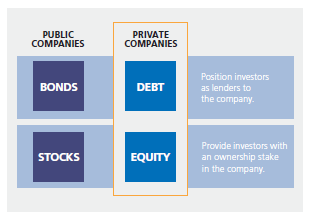
The Borrower
Borrowers tend to be middle-market firms. The middle market represents American businesses with revenues between $10 million and $1 billion. Currently, 200,000 middle-market firms in the U.S. employ around 48 million people.
Borrowers like private credit financing due to:
- faster execution times due to a more efficient process
- higher certainty to close
- loan terms are less likely to change once set
- fewer public disclosure requirements
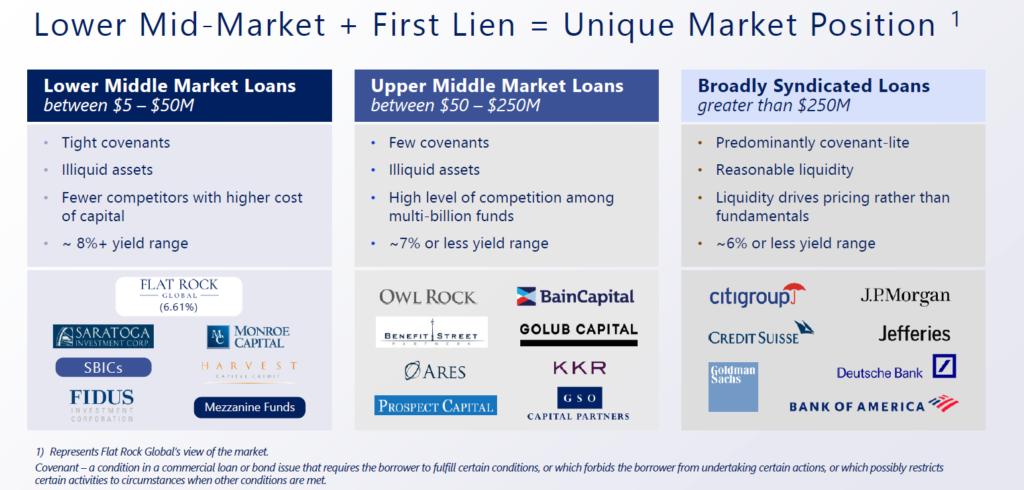
The Lender
People typically associate getting a loan with their local bank. After all, that’s probably where you obtained your mortgage. However, bank lending has dramatically reduced for a few reasons:
- the number of banking institutions has declined over the last 30 years
- banks have become more risk-averse after the 2008 crash
- banks have found it more difficult and burdensome to issue loans due to an enhanced regulatory environment post-2008
This reduction created a space in the market for fund managers to provide business financing.
Other lenders can include:
- Hedge funds
- Business development companies (BDCs)
- Collateralized loan obligations
- Insurance companies
- Specialty finance companies
- Private equity shops
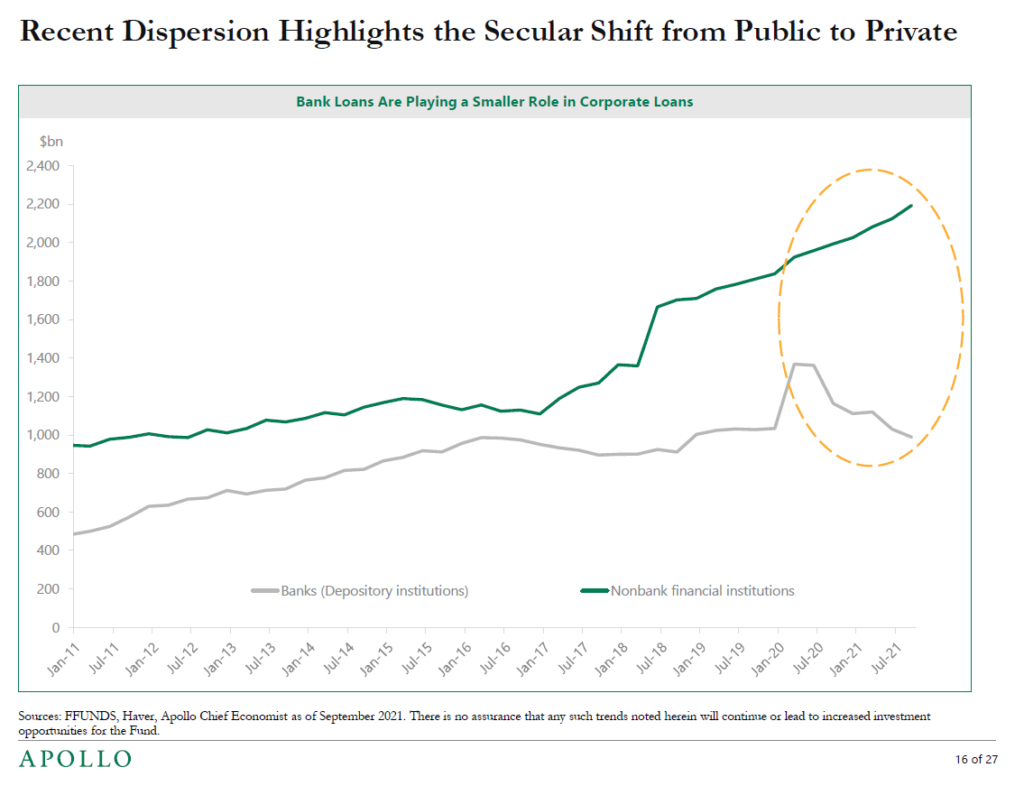
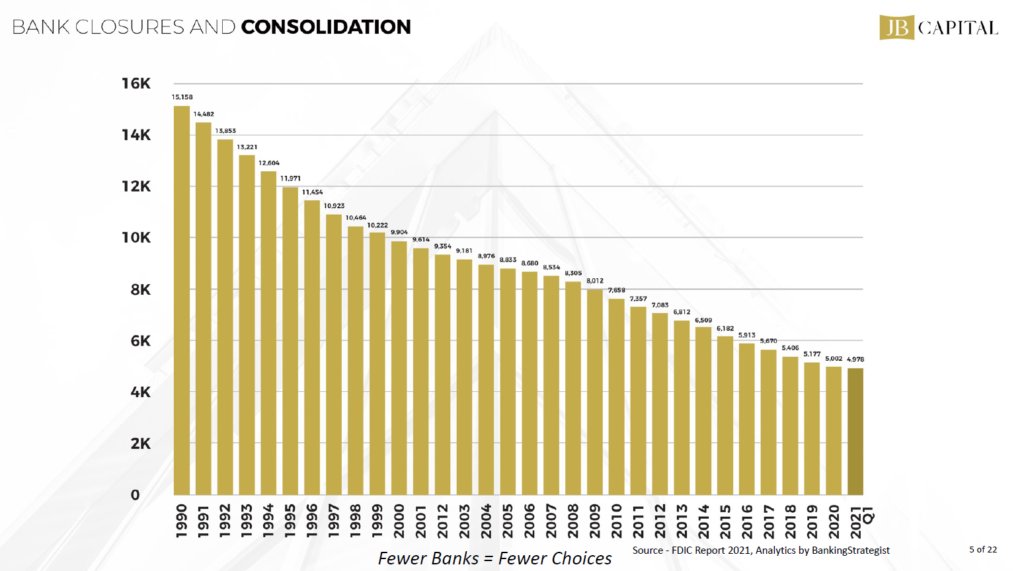
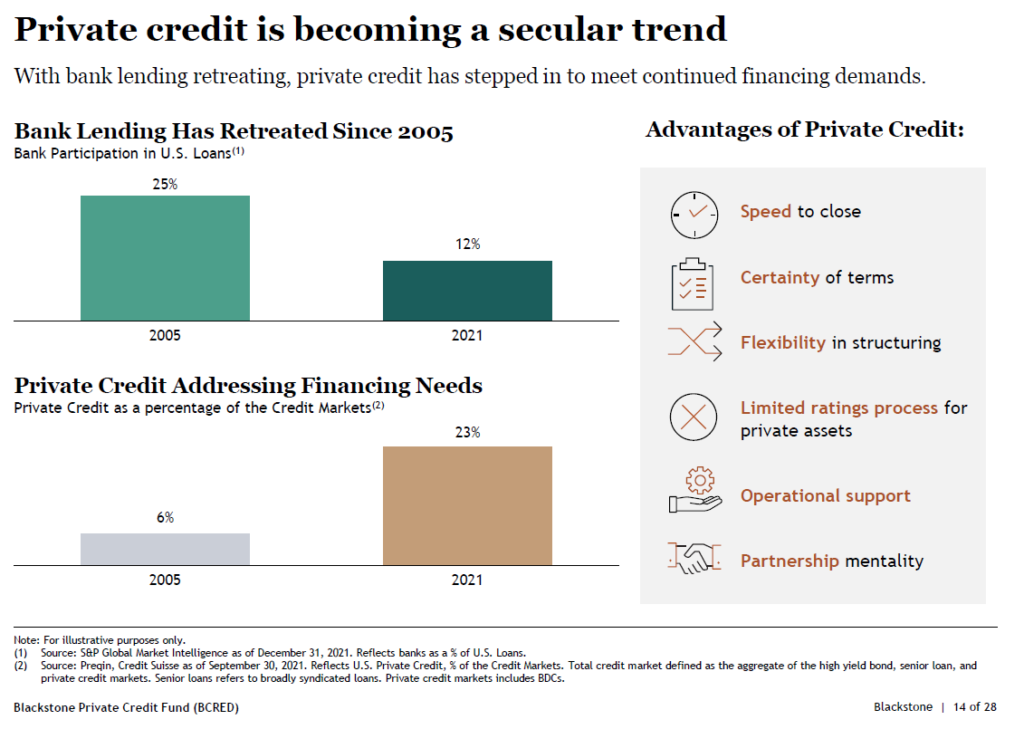
Sponsor-Backed Lending
Sponsor-backed lending is the practice of providing financing to companies backed by private equity sponsors who play an active role in the management of these companies. We discussed private equity in detail in last month’s newsletter.
Under sponsor-backed lending arrangements, both sponsors and lenders play an active role in the management and operations of the business. This partnership between private equity and private credit investors aligns incentives to see the portfolio companies prosper.
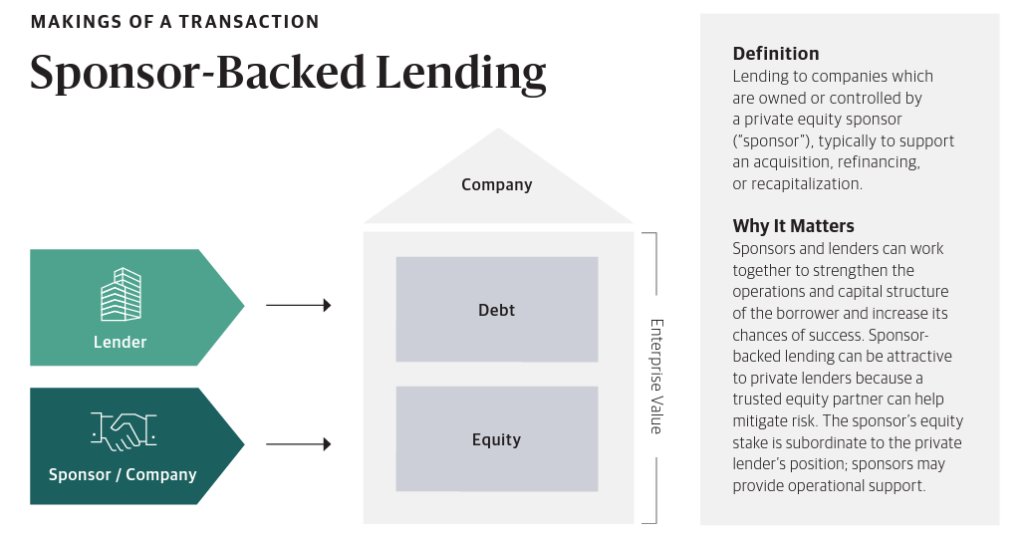
The Capital Structure
The capital structure (i.e. capital stack) refers to the amount of debt and equity a company uses to finance its overall operations and growth. Debt investors have the highest claim priority on cash flows and assets, with equity investors having the lowest claim. Therefore, equity investors demand higher returns to compensate for the higher risk.
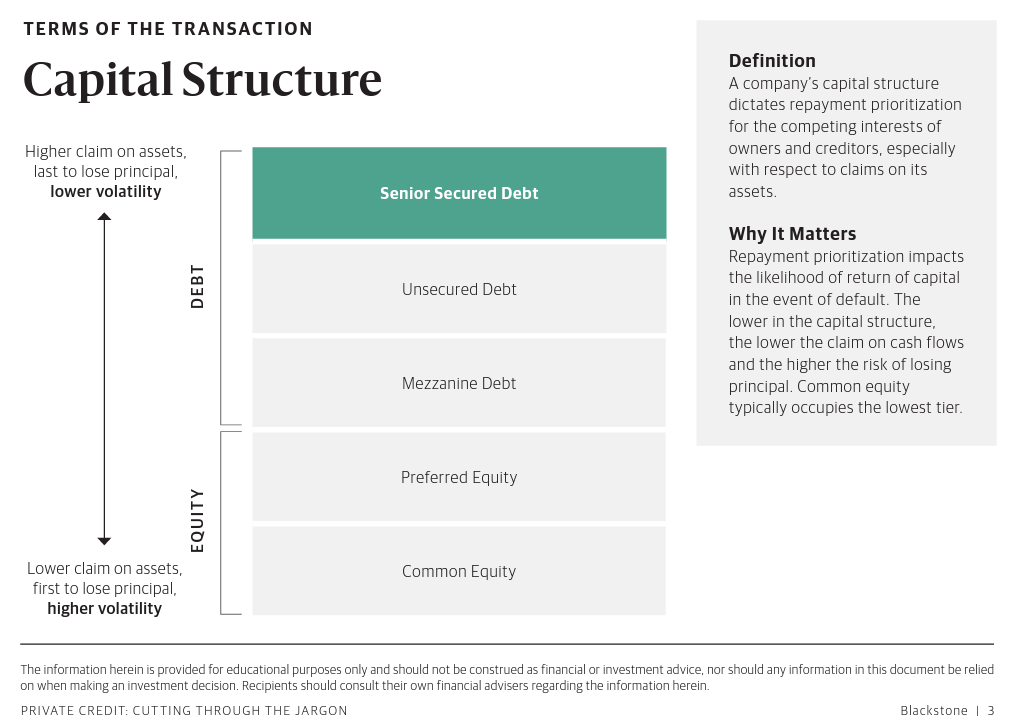
Loan Types
Loans are not all created equally as they can sit in different places in the capital stack. Senior debt ranks first in repayment priority, while mezzanine debt (or subordinated debt) sits last. Even in the senior debt position, loans can have further distinctions – such as first lien and second lien claims on company assets.
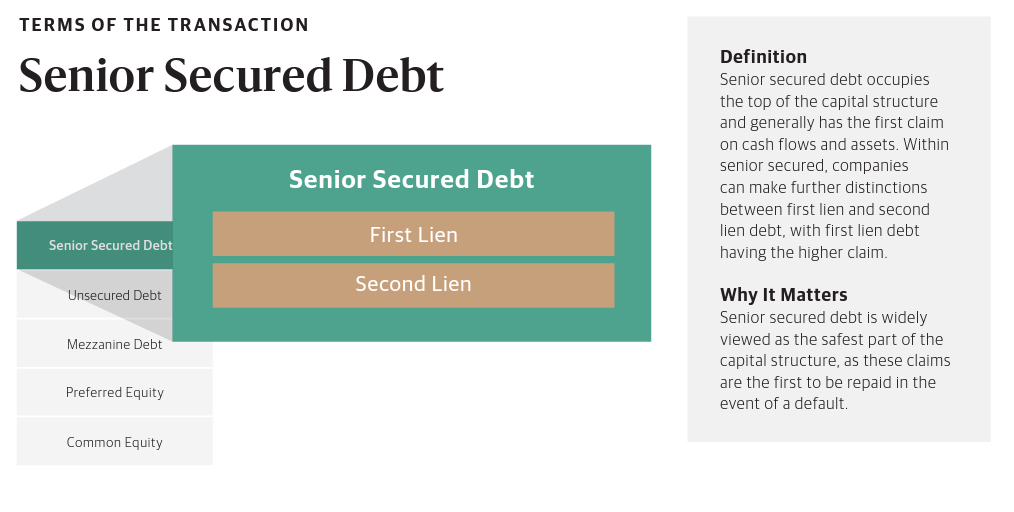
Private Credit Strategies
There are many strategies and sub-categories to this large asset class. Some include:
- Direct lending
- Mezzanine lending
- Multi-sector
- Real asset lending
- Royalties
- Specialty finance
- Special situations
- Structured credit
Each strategy’s risk/return profile is dictated by the investment and its position in the capital structure. Strategies with lower risk tend to yield less than those with higher risk. You can learn more about each strategy here.
Investor Benefits
Private credit investing possesses many benefits, including:
1) High current yields
2) Inflation hedge
3) Rising rate shield
4) Low correlation to other investments
5) Improved diversification & risk/return portfolio characteristics
It’s no surprise how low interest rates have become in the United States. Investors are starving for investments that pay higher interest rates (also known as yield).
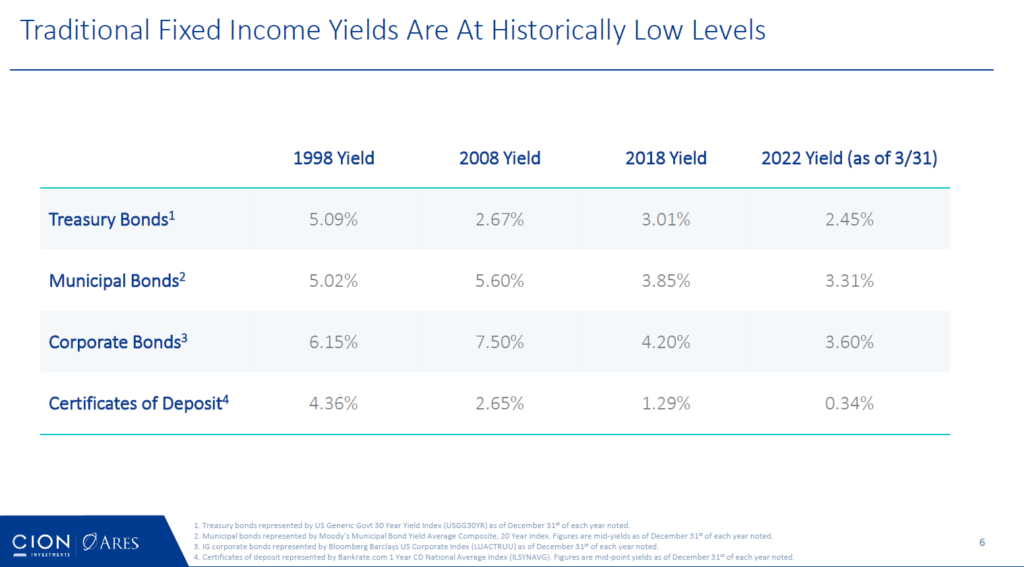
Enter private credit. Investors can earn yields of 5% or higher. These high yields, negotiated between borrower and lender, are standard in private credit. Borrowers are willing to pay more in some cases due to the benefits we mentioned earlier.
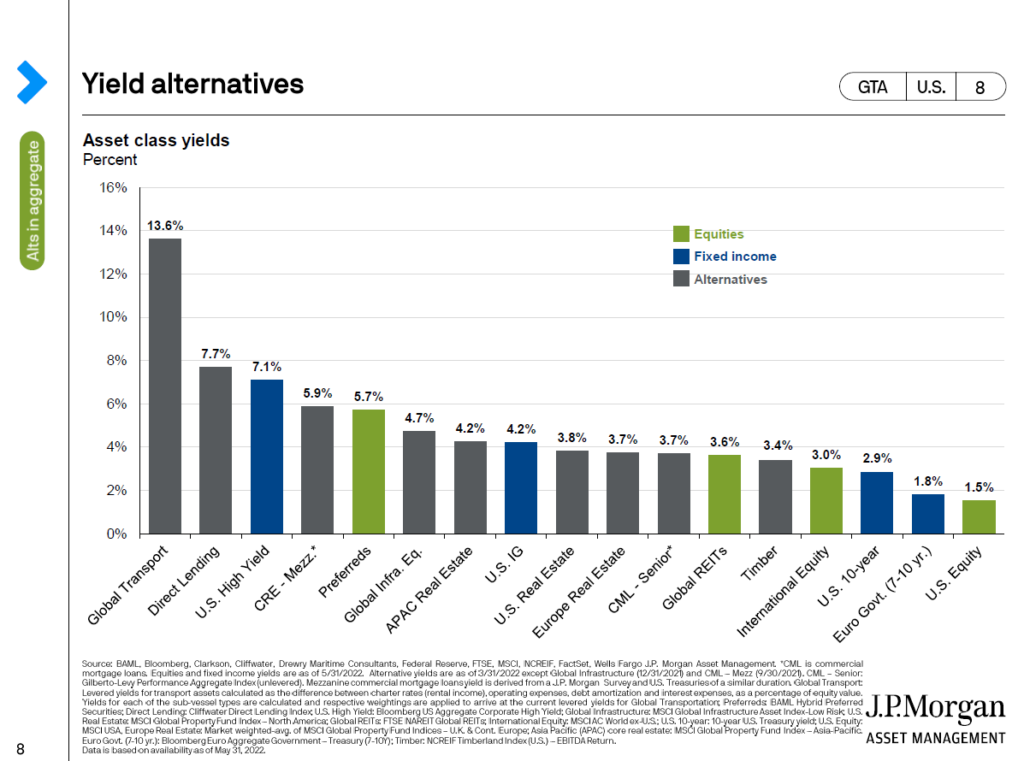
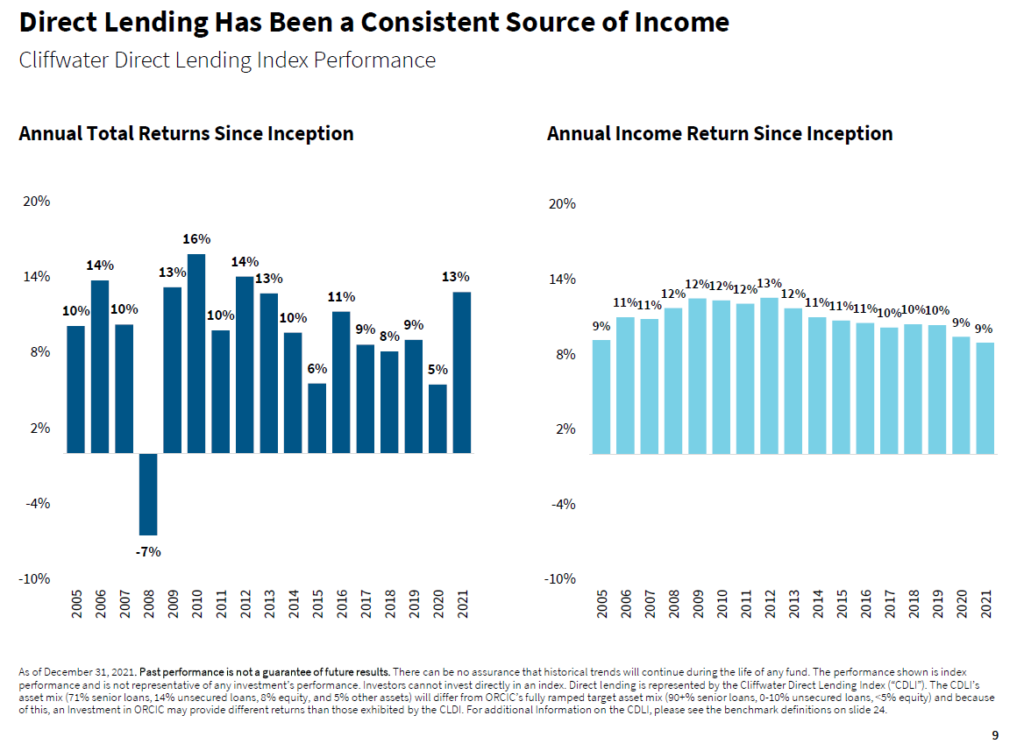
Private credit can also hedge against inflation and rising interest rates. The reason is that certain loans use floating interest rates, which means that the interest rate can change based on the fluctuations in the loan Reference Rate – typically LIBOR or SOFR.
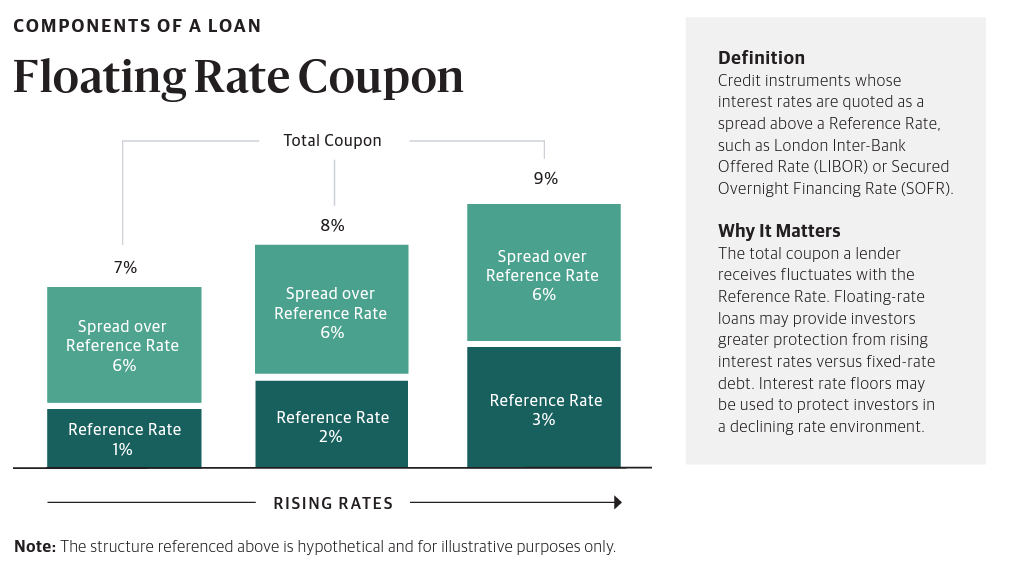
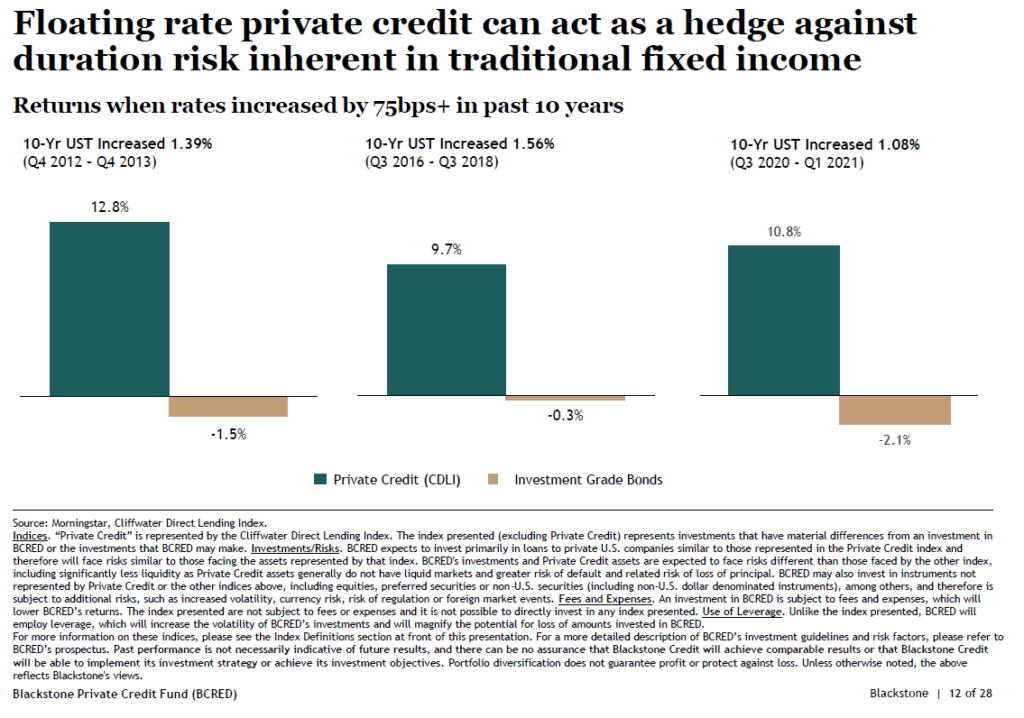
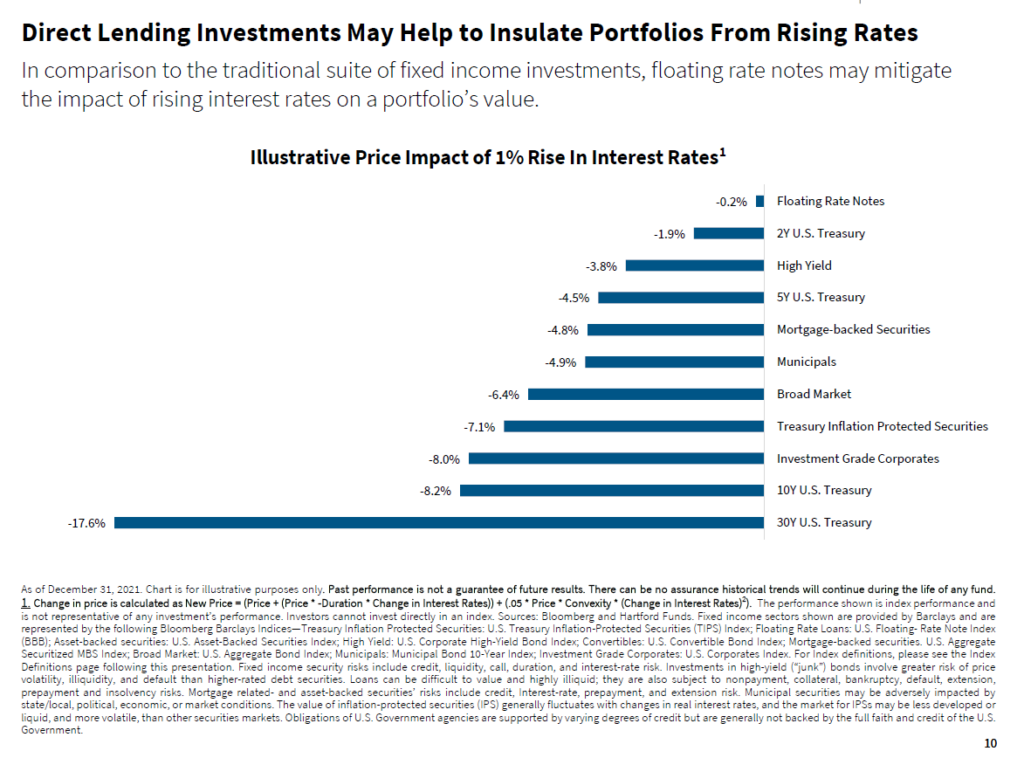
Lastly, private credit exhibits low correlations to other fixed-income investments—a vast universe. Due to these low correlations, adding private credit improves a portfolio’s risk/return characteristics.
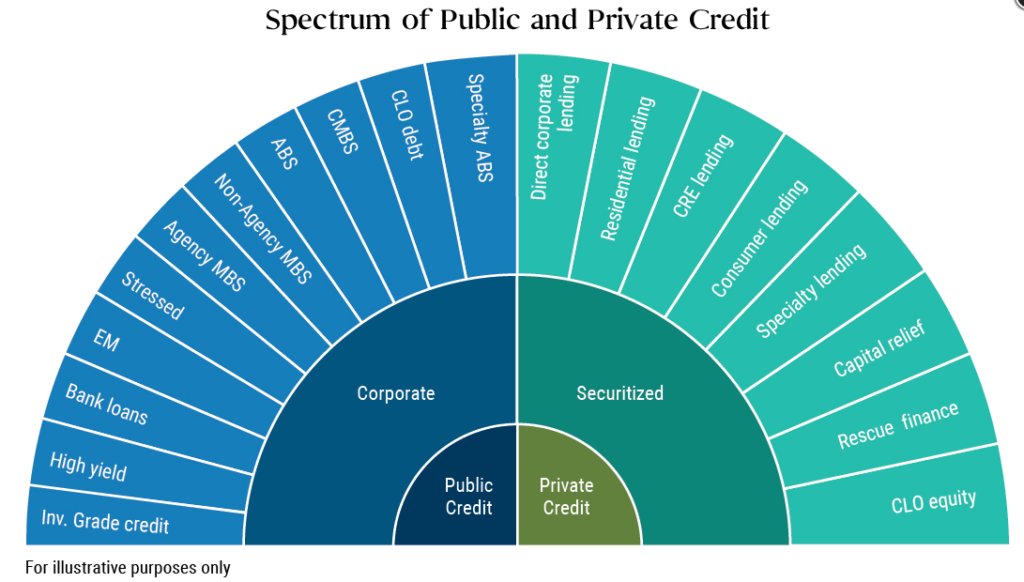
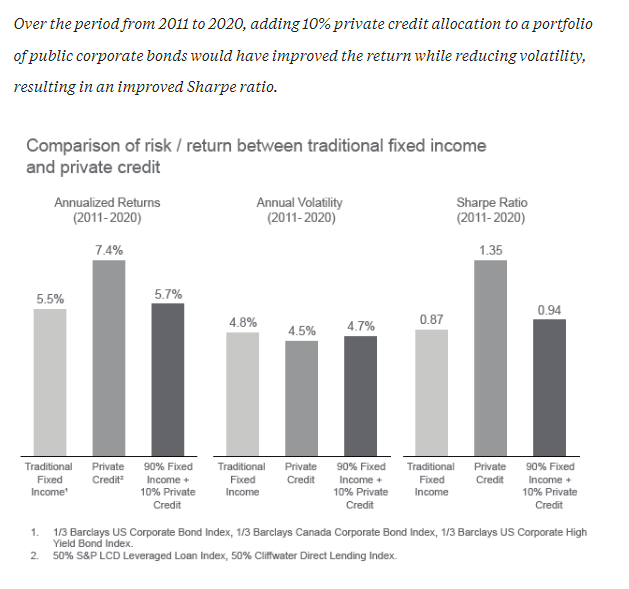
Risks
Investing always entails risk and private credit is no different. Some include:
- If a company defaults and cannot repay principal/interest
- borrowers are typically smaller companies
- companies are typically rated below investment grade (or not at all)
- quality of due diligence/underwriting
- leverage
- conflicts of interest
- lower liquidity compared to public markets
In conclusion, private credit can be an excellent diversifier for traditional portfolios. The benefits are many in today’s low-interest-rate environment. Please schedule time with me to learn more about our private credit offerings.
For further reading
Blackstone: Private Credit – Cutting Through The Jargon
CNL: What Is Private Debt
Institutional Investor: Private Credit: The $1 Trillion “New 40” Opportunity
Oaktree: Direct Lending: Benefits, Risks, & Opportunities
Pinebridge: An Introduction to CLOs
Prequin: Private Debt
Texpers: Why The Private Credit Market Is Growing Fast
Dave’s Picks
Steve Jobs’ 2005 Stanford Commencement Address (great video!)
Bobby McFerrin – Don’t Worry, Be Happy (Live) (amazing!)
How to Live a Rich Life by Ramit Sethi (amazing read)
